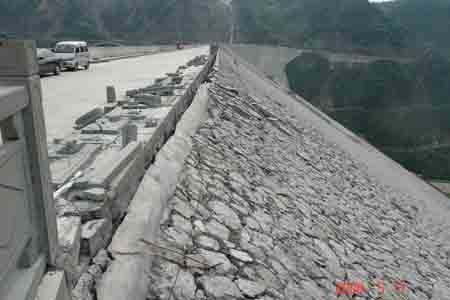|

|
|
The Zipingpu Dam five days after the earthquake.
|
Ji Shaocheng, a professor of Geophysics and Geology at the Ecole Polytechnique de Montreal, Quebec, Canada, also insisted that the Zipingpu Dam and the Wenchuan earthquake were not related.
"The huge scale of the Wenchuan earthquake indicates unambiguously that it was a true tectonic event caused by eastward extrusion of the Tibetan plateau against the Sichuan Basin", Prof. Ji told Xinhua.
Although the water piled behind the dam weighed more than 320 million tonnes, Ji said. "But since the water body covers a vast area, the stress it exerted on the riverbed is similar to that of a 50 or 60-storey building.
Such stress was far from enough to cause the earthquake's violent rupture with a length of 280 km and a depth of 20-25 km within the crust, he said.
"It's like scratching your foot while wearing a dozen boots," he said.
Like most reservoirs, Zipingpu was built near a fall of the Minjiang River, for power generation. It also happened to be an earthquake-active area.
It began to be filled in December 2004, and can hold 1.1 billion cubic meters of water.
The reservoir's dam height, storage capacity, and location on a fault satisfied at least three main conditions for a RIS, said Fan Xiao, chief engineer for regional geological surveys at the Sichuan Bureau of Geological Exploration and Exploitation of Mineral Resources.
"Statistics showed a reservoir with a dam height of over 100 meters and a total storage capacity of more than 500 million cubic meters has a 34 percent chance for causing RIS," Fan said. He did not say where the statistics came from.
As a long-time anti-dam advocator, Fan had advised against the building of Zipingpu for many years.
"Lei's paper further convinced me the Zipingpu Dam and the Wenchuan earthquake were closely connected," Fan told Xinhua in a telephone interview.
Fan Xiao even went as far as suggesting that a dam the size similar to Zipingpu would not only induce an earthquake, but also escalate the power of a potential earthquake.